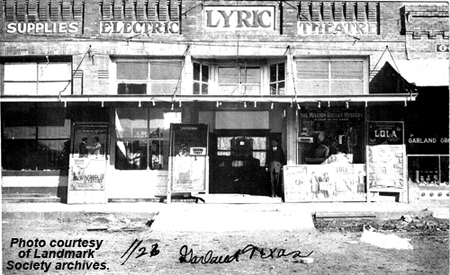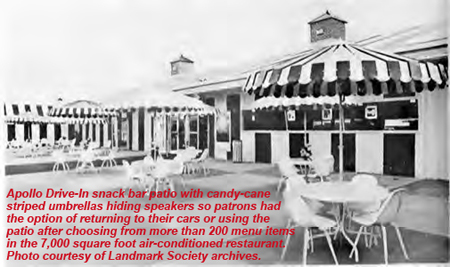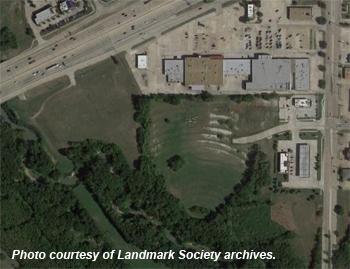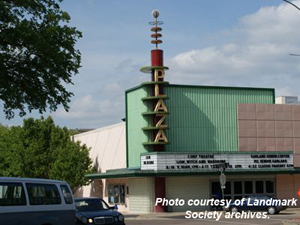“It’s amazing that the moving picture history goes back to 1900 in Garland,” Kim Nurmi said. “It starts with the first showing in an upstairs community room in the Knights of  Pythias Building in downtown Garland.”
Pythias Building in downtown Garland.”
A projector and a white sheet were set up in the room to show the movie.
“It was a big deal. No one had ever seen a moving picture before,” Nurmi said. “All of the first mentions of movies in Garland are similar. There was a space big enough to set up the projector and get people in to watch a moving picture.”
People quickly realized that for little money, they could own their own theater. As a result, that became the big thing. It was so big that at one time, there were four movie theaters in downtown Garland. They changed names regularly, but some of the more recognizable are the Plaza, t he Texan, Lyric and Garland Theater.
he Texan, Lyric and Garland Theater.
Drive-Ins
The exhibit also covers the history of Garland’s drive-in theaters.
The memory of the Garland Road Drive-In, renamed the Apollo Drive-In, is familiar to many. It’s red and white striped snack bar was distinctive and popular. In addition, South Garland had the Belt Line Drive-In, later renamed to the 67 Drive-In. The image of where this theater was located is still visible on Google Maps where the earth was scraped into a slant.
Ron Bozeman
Another interesting subject covered is that of Ron Bozeman, a Garland High School graduate. He produced “The Silence of the Lambs,” one of few movies to win the “big five” Academy Awards. Those are Best Picture, Best Actor, Best Actress, Best Screenplay and Best Director. And it was produced by a GHS graduate!
Garland is the primary subject of the exhibit, but it is not only about Garland. It is set up as a timeline and, therefore, includes significant things that were happening everywhere.
“To appreciate Garland history, you have to interpret it in the context of what else was happening in the nation and the world,” Nurmi said. “I think a lot of people automatically assume that Garland is going to be behind what’s going on, but sometimes we are very close. We’re closer than you’d suppose.”
Dates/Times
The exhibit runs through the end of February. Visit Thursday–Saturday from 10 a.m. – 2 p.m.
Private appointments are available Monday-Wednesday for anyone who isn’t comfortable around others because of the pandemic. Email heritage@garlandtx.gov.
COVID-19 protocols are in place, so visitors and staff must wear masks.
The next exhibit starts March 4. The subject is railroads in Garland.
Exhibits at the Landmark Museum are always informative and thought-provoking. A few past exhibits include: The History of Cultural Arts in Garland; Quiltmaking; Hat Manufacturing; the History of the Downtown Square by Decade and more.
About: Established in 1972, the Landmark Society collects, preserves, exhibits and interprets historical elements of our community’s unique heritage. It supports an educational effort to enlighten and entertain the public. Landmark’s program of work emanates from the Landmark Museum, situated at 393 N. Sixth Street. Dedicated in 1974, the museum is housed in the vintage 1901 Santa Fe depot, owned and maintained by the city of Garland. Inside are Garland-specific historical artifacts and documents, all donated to and maintained by the society.


